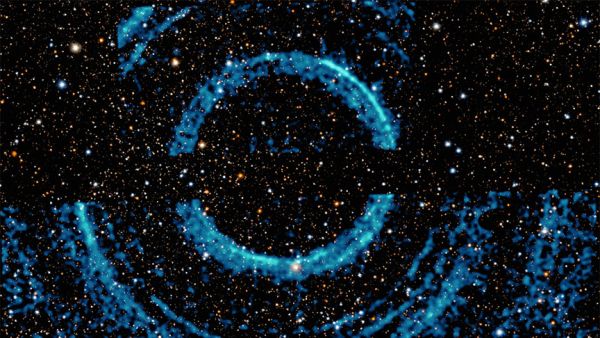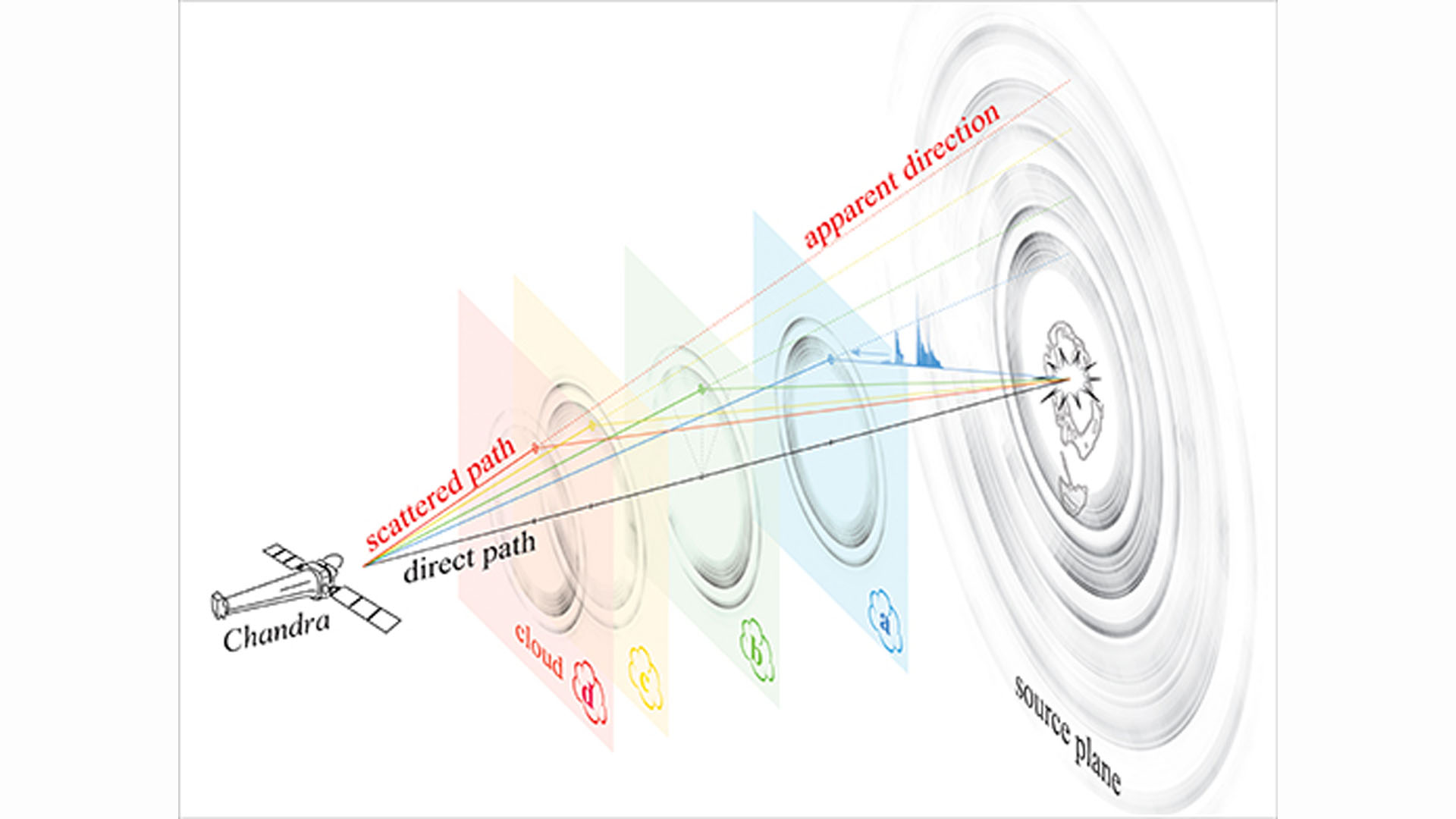Powerful X-ray burst from black hole ripples through galactic dust in new NASA image

NASA has released a new image of ripples in dust clouds created by an unexpected black hole X-ray burst observed in 2015.
The image, a combination of observations taken by the NASA workhorse Chandra X-ray Observatory and the optical Pan-STARRS telescope in Hawaii, shows blue concentric rings of dust around the V404 Cygni black hole (the Chandra view) on the backdrop of surrounding stars (as seen by the Pan-STARRS telescope).
The concentric circles reveal interesting information about the dust clouds between Earth and V404 Cygni, NASA officials wrote in a statement. Although the image is two-dimensional, the rings are actually dispersed in space across the 7,800 light-years that separate Earth from the black hole.
Related: This black hole's jets wobble like crazy because it's warping space-time
The rings reflect how the X-ray light emitted by the black hole during the burst propagated throughout the Milky Way galaxy and bounced off dust particles concentrated in clouds within it, like sound waves creating echoes. The size of the rings therefore corresponds to the distance between Earth and each dust cloud, with the smaller rings revealing the location of the more distant clouds and the larger rings representing those closer to our planet.
NASA explained in the statement that the so-called light echoes appear as narrow rings rather than wide rings or haloes because the X-ray burst lasted only a relatively short period of time.
The unusually powerful X-ray burst was first spotted on June 5, 2015, by the Neil Gehrels Swift Observatory, a NASA space telescope that studies gamma-rays. Chandra subsequently observed the event between July 11 and 25, 2015. However, the brightness of the event forced Chandra's operators to place the V404 Cygni system in between the telescope's detectors to prevent damage to the instrument in case of another powerful burst.
Sign up for the Live Science daily newsletter now
Get the world’s most fascinating discoveries delivered straight to your inbox.

Just like a medical X-ray image reveals information about the properties of the various tissues in the body, so do the Chandra observations tell astronomers about the properties of the dust clouds, NASA said in the statement. Researchers compared the brightness of the X-ray light over a range of wavelengths with computer models of interstellar dust of various chemical compositions.
Since different materials absorb X-ray light differently, scientists were able to learn more about what those clouds are made of. The team determined that the dust most likely contains a mixture of graphite and silicate grains. In addition, by analyzing the inner rings with Chandra, the scientists found that the densities of the dust clouds are not uniform in all directions.
Several studies based on the initial observations have been published since 2015.
V404 Cygni is a binary system consisting of a black hole as heavy as nine suns and a companion star about half of the mass of the sun. The black hole sucks in material from the star, which can be observed thanks to the X-rays emitted by the black hole's accretion disk.
Follow Tereza Pultarova on Twitter @TerezaPultarova. Follow us on Twitter @Spacedotcom and on Facebook.











